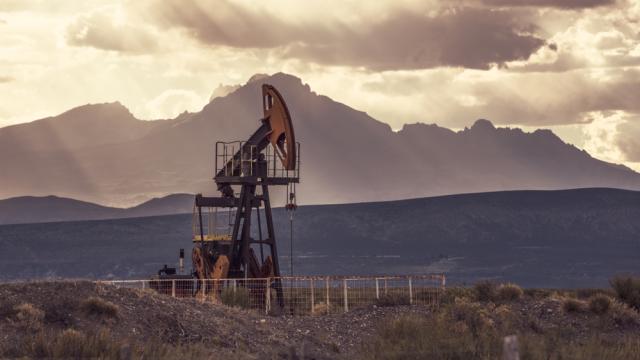
Argentina plans to restart oil exports to Chile once the 110,000 bbl/d capacity OTASA pipeline reopens. (Source: Shutterstock)
Argentina plans to restart oil exports to neighboring Chile once the 110,000 bbl/d capacity Oleoducto Trasandino Argentina SA (OTASA) pipeline finally reopens, Aleph Energy Managing Director Daniel Dreizzen told Hart Energy on the sidelines of CERAWeek by S&P Global.
“With the rehabilitation work along the pipeline, we are estimating that in three or four months we will be able to transport around 40,000 bbl/d to Chile,” Dreizzen said on March 9 during the event.
Dreizzen expressed optimism about seeing more Argentine oil exports in the future.
“It's good news we have a plan, and it's not only a plan on paper. It’s happening at our speed, but it is happening,” Dreizzen said. “We're going to export oil through Chile to the Pacific and to Asia and that's going to happen this year.”
The OTASA pipeline spans from Argentina’s Puesto Hernández Field in the Neuquén Basin to the Chilean city of Talcahuano. It stopped operating in 2006, when its only client, the ENAP refinery in Concon, Chile, no longer needed the supply, the Neuquén Province government revealed in details posted on its website.
The South American country is also moving forward with plans to expand capacity to ship oil from the Vaca Muerta formation to Puerto Rosales (Bahia Blanca).
By 2024-2025, Argentina plans to boost oil production and exports. The incremental oil production will be destined for export and boost the country’s foreign currency earnings, according to Dreizzen, who previously served as Argentina’s Secretary of Energy Planning between 2018 and 2019 prior to just over a decade with Argentina’s Pluspetrol, according to details on his LinkedIn page.
Argentina’s oil production reached 617,000 bbl/d in Dec. 2022 (of which 335,000 bbl/d was conventional production) and has grown in recent years but is still far from a peak 800,000 bbl/d reached in 1999, Aleph reported in its Feb. 2023 Oil and Gas Monthly Report.
Argentine LNG exports of scale: not this decade
The Vaca Muerta, or ‘Dead Cow’ formation, is home to recoverable resources of 308 Tcf, according to the U.S. Energy Information Administration (EIA). This compares to 297 Tcf in the Permian and 304 Tcf in the Haynesville, according to Rystad data.
“The potential is immense and [investors can compete]—as the Vaca Muerta is as competitive as the Permian now—and there's less competition than in the U.S.” Dreizzen said.
While Argentina is far from Europe and the energy crisis provoked by Russia’s invasion of Ukraine in February 2022, the South American country normally has excess gas production available for export during its summer months when Europe is experiencing its winter and most demand for gas.
RELATED
Argentina Officials in Houston Boast Vaca Muerta’s Potential
Argentina’s situation is expected to improve as more infrastructure is completed and production rises, many energy pundits say. But political uncertainties remain with presidential elections again on the near-term horizon.
The first tranche of the Néstor Kirchner gas pipeline could be ready at the end of Argentina’s winter in August 2023 and boost capacity by 11 MMcm/d. A second tranche could push capacity above 40 MMcm/d, Dreizzen said.
Argentina produced 129 MMcm/d of gas in December 2022, of which conventional was 59 MMcm/d, tight (20 MMcm/d) and shale (50 MMcm/d), according to Aleph.
Despite rising gas production in recent months and plans to boost pipeline takeaway capacity from Vaca Muerta, Dreizzen said Argentina wasn’t likely to be a year-round LNG exporter of scale this decade.
RELATED
Exclusive Q&A: The Future of Argentina’s Vaca Muerta Shale and LNG
“The potential is there, but we need to do the homework. I don't see that by 2030. [We] have to be competitive with the U.S. because [our] gas is not on the coast, it's in Neuquén, so you have to transport, liquefy and transport it to Europe,” Dreizzen said. “It's a difficult decision for a company to decide where to put their money in shale gas here. It's good the government and the YPF, the state oil company, are planning this... it's important but difficult.”
Recommended Reading
Phillips 66’s NGL Focus, Midstream Acquisitions Pay Off in 2024
2025-02-04 - Phillips 66 reported record volumes for 2024 as it advances a wellhead-to-market strategy within its midstream business.
BlackRock CEO: US Headed for More Inflation in Short Term
2025-03-11 - AI is likely to cause a period of deflation, Larry Fink, founder and CEO of the investment giant BlackRock, said at CERAWeek.
Stonepeak Backs Longview for Electric Transmission Projects
2025-03-24 - Newly formed Longview Infrastructure will partner with Stonepeak as electric demand increases from data centers and U.S. electrification efforts.
Velocity Management Invests in Pipeline Builder M Wright Services
2025-01-16 - Velocity Management Advisors has made a minority investment in M Wright Services and three of Velocity’s partners will join the construction firm’s board.
Michael Hillebrand Appointed Chairman of IPAA
2025-01-28 - Oil and gas executive Michael Hillebrand has been appointed chairman of the Independent Petroleum Association of America’s board of directors for a two-year term.
Comments
Add new comment
This conversation is moderated according to Hart Energy community rules. Please read the rules before joining the discussion. If you’re experiencing any technical problems, please contact our customer care team.






